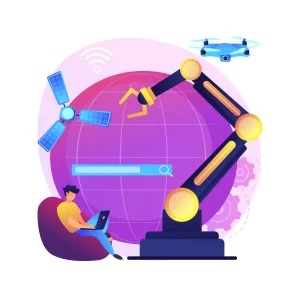1. Understanding AI’s Role in Leadership
AI has shifted the leadership paradigm by providing tools that enhance decision-making, predict trends, and optimize processes. Leaders no longer need to rely solely on intuition; they now have access to data-driven insights that improve accuracy and efficiency.
Key Applications:
- Predictive Analytics: AI enables leaders to anticipate market shifts and customer behaviors.
- Automation: AI automates repetitive tasks, freeing leaders to focus on strategy and innovation.
- Enhanced Collaboration: AI-driven tools facilitate remote work and team communication.
2. Embracing a Growth Mindset
In the age of AI, leaders must remain adaptable and open to continuous learning. A growth mindset ensures they can navigate technological advancements and inspire their teams to embrace change.
How to Cultivate a Growth Mindset:
- Encourage experimentation and innovation within your organization.
- Stay informed about AI advancements and their potential impact on your industry.
- Invest in personal and team development to keep skills relevant.
3. Balancing Technology with Humanity
AI excels at processing data and automating tasks, but it cannot replicate human traits like empathy, creativity, and ethical judgment. Leaders in the AI age must strike a balance between leveraging technology and maintaining a human-centered approach.
Practical Tips:
- Foster strong interpersonal relationships with your team.
- Use AI to complement, not replace, human decision-making.
- Prioritize emotional intelligence in leadership to navigate complex human dynamics.
4. Data-Driven Decision-Making
AI equips leaders with real-time insights, enabling them to make informed decisions quickly. However, effective leaders also recognize the limitations of data and use their judgment to fill the gaps.
Steps for Better Decision-Making:
- Analyze data with a critical eye to avoid over-reliance on AI-generated outcomes.
- Combine AI insights with organizational values and long-term goals.
- Ensure that data used in AI models is accurate, unbiased, and ethically sourced.
5. Leading Through Change
The integration of AI often brings disruption, requiring leaders to guide their teams through uncertainty. Effective leadership in this context involves clear communication, strategic vision, and a focus on inclusivity.
Strategies for Leading Change:
- Articulate the benefits of AI adoption to stakeholders.
- Address employee concerns about automation and job displacement.
- Provide training and resources to help teams adapt to new technologies.
6. Building a Culture of Innovation
AI thrives in environments that encourage creativity and experimentation. Leaders must cultivate a culture that supports risk-taking and rewards innovative thinking.
How to Build an Innovative Culture:
- Encourage cross-functional collaboration to generate diverse ideas.
- Allocate resources for R&D and pilot projects.
- Recognize and celebrate contributions to innovation within the organization.
7. Ethical Leadership in AI
With great technological power comes great responsibility. Leaders must ensure that AI systems are used ethically, transparently, and in a way that aligns with organizational values.
Ethical Considerations:
- Address biases in AI algorithms to promote fairness.
- Protect user data and prioritize privacy in AI implementations.
- Develop clear policies on AI usage and ensure accountability at all levels.
8. Future-Proofing Leadership
As AI continues to evolve, so must leadership practices. Future-proofing leadership involves staying ahead of technological trends, fostering adaptability, and preparing the next generation of leaders.
Steps to Future-Proof Leadership:
- Regularly update your knowledge on emerging AI applications.
- Mentor and empower younger leaders to embrace AI responsibly.
- Collaborate with AI experts to align technology with organizational goals.
Conclusion
Leadership in the age of AI is a delicate balance of technological savvy, emotional intelligence, and ethical judgment. By embracing AI as a tool for empowerment rather than a replacement for human leadership, today’s leaders can build organizations that are innovative, resilient, and future-ready. The key to success lies in combining the best of technology with the irreplaceable qualities of humanity.



